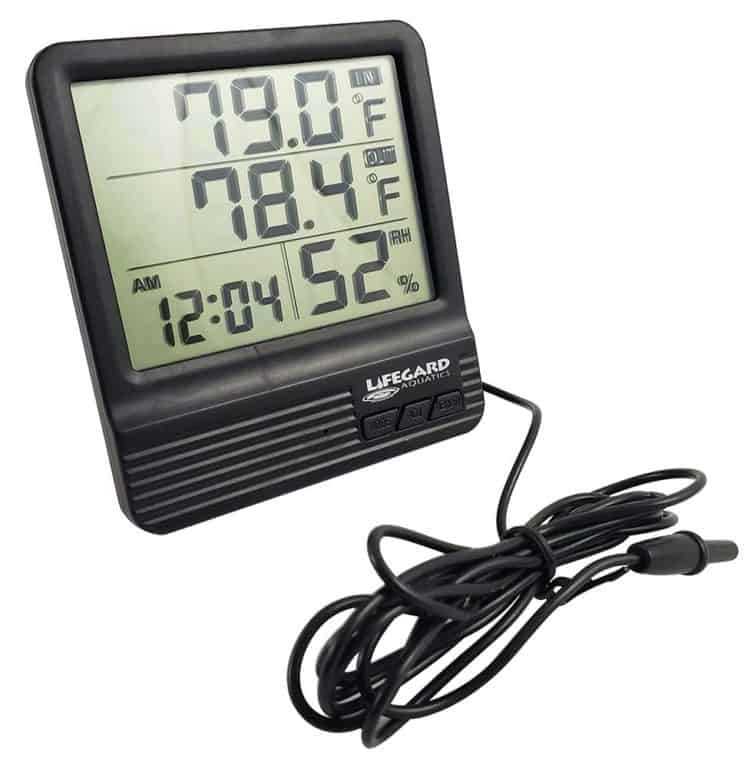If you own an aquarium you should be aware of a probable mold problem they could cause. When we moved across the country to an older home and the winter first winter arrived, my 75 gallon aquarium starting to give us moisture problems, and if we had not dealt with them quickly it could have easily turned into a mold nightmare!
Tropical freshwater and saltwater aquariums evaporate water due to the warm temperature of the water. An aquarium over 50 gallons can evaporate over 1 gallon a day & begin to raise home humidity above the recommended 30-50%. Excess moisture can lead to mold on walls, ceilings, carpets, and clothing.
Our first sign of excess moisture was on our windows, then when we pulled out our couch for cleaning, the walls were covered in moisture. This soon had my wife not happy with me and my tank!
This article was written to pass on my research, findings and what we did to combat our moisture problem before it could potentially make us sick!
What Is Mold Exactly?
According to WebMD, mold is a fungus made up of very small organisms and can be of a variety of colors. For mold to grow and reproduce they need a humid environment – Our aquariums can easily provide this!
Mold reproduces by releasing spores into the air, when a spore lands on a damp surface it begins to grow and replicate further. In small amounts, mold is generally harmless, but if left to reproduce into larger volumes it can begin to make humans and animals sick and can also destroy your home.
Do Aquariums Increase Humidity In Homes?
The typical water temperature in an aquarium is around 78°F-80°F with our home ambient room temperature around 70°F-72°F. This 8-10°F causes water to evaporate from the aquarium and disperse into the room causing the humidity to rise. The larger the temperature gap, the more water evaporates.
My aquarium sits at 80°F and I try to keep my home around 72°F. This 8° temperature difference is enough to pull out 1.5 gallons of water from my system via evaporation every day. with modern homes now being selaed tight from draughts this can raise the humidity significantly in the home.
During winter months when the outside walls are cold, especially in older homes, this can cause the moisture suspended in the air to condense and form moisture on the walls of the room containing the fish tank. If left, this moisture can create damage to the walls, and trim and turn into mold.
When this moisture is released into our homes it can create problems for the homeowner, or it can be no issue at all. There are so many factors that can influence how well your home handles the evaporated moisture and two identical aquariums can affect each home they are in very differently.
According to the Mayo Clinic, our homes should be kept at a Relative Humidity level of between 30%-50% to avoid health problems. As the humidity level begins to increase over 50% this is when mold can begin to become noticeable in our homes, dorm rooms, offices, or any area containing an aquarium.
The larger the aquarium, the more water it can evaporate into the surrounding air.
Here is an excellent article published by Oregon State University about humidity in our homes and what can affect how well it handles moisture. It is definitely worth a read! You can find it Here.
Does Excess Humidity Cause Mold?
Excess moisture in a home can lead to mold growth. Home humidity should be kept between 30% and 50% to ensure optimum health. When homes begin to increase humidity over 60% it is advised to install and run a dehumidifier to prevent excess moisture from forming and tuning to mold.
As stated, the ways in which our individual homes, office, etc deal with the high humidity caused by our aquariums can vary dramatically.
Your home can appear to be completely free of mold but once an aquarium begins to add moisture, the mold could begin to show. A small unseen patch of mold can soon grow once the humidity of the room begins to rise.
Now, this is not to say that all homes will begin to grow mold the second an aquarium is installed, but an aquarium added to a room could bring mold issues if the additional moisture ingress cannot be handled by your home.
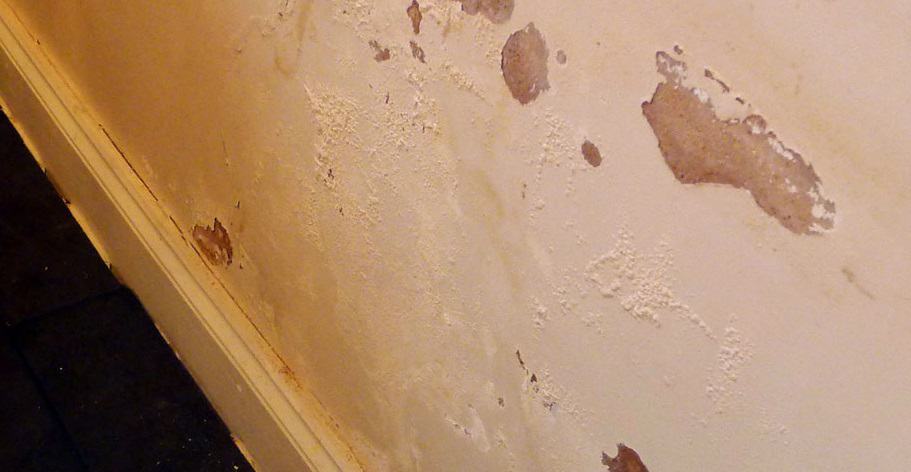
Mold likes to grow on floors, walls, carpets, appliances, furniture, and anything that can provide a surface and food for it to grow. The most typical places homeowners find mold growing are the areas containing lots of moisture:
- Kitchens
- Bathrooms
- Attics
- Windows
- Basements
Generally, areas of poor or low ventilation will be the first areas you may notice that you have an excess humidity problem. This is how my wife and I found moisture on the walls behind our couches. They were pushed right up against the wall and because our house is 100 years old and with winter being in the -40’s here, the walls get cold.
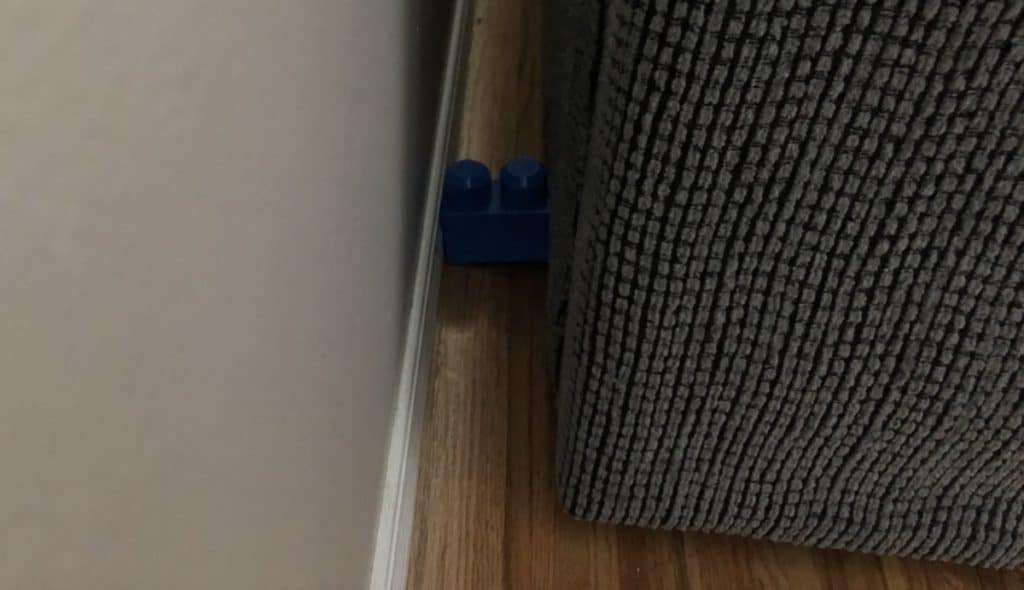
This lead to condensation forming on them. Our solution was to move our couches away from the wall to allow air to flow around the back – This cured the moisture problem there! If we had not done this mold would have soon appeared!
What Are The Signs Of Mold Growth?
As aquarium owners, it is a good idea to know what the signs are so any issues can be dealt with before they become problematic. Trying to eradicate a large mold infestation could be costly as it usually requires professional help.
Signs of mold growth to look for are:
- Cracked paint
- Discoloration on walls
- Surfaces and fabrics feel damp
- Wall surfaces becoming soft
- Warped flooring
- Musty odors
The main signs that will help to find potential problem areas is looking for the moisture. If an area is a dry mold will not grow. Find the moisture, you find the potential problem area. If you can handle the moisture problem quickly you can prevent mold from showing up.
Is Mold Dangerous?
Mold can cause many problems and can become dangerous if allowed to grow to large volumes, any problem areas need to be dealt with quickly. Here are some situations where mold can cause problems:
- Destroys Fabrics – Mold can destroy your clothes, furniture, and any fabric item that it is allowed to grow on
- Destroys Wood – Mold can cause dry rot to wood structures which usually requires a professional to deal with it. This could get very expensive
- Destroys Carpeting – Cleaning my not be enough, complete removal may be necessary
- Bad Odor – Mold can cause a very bad odor that cannot be removed completely
These issues above are generally superficial. We can replace and fix those issues. The major issue with mold is that it can become very dangerous to us, our family members, and our pets. This is the main reason that mold cannot be allowed to grow in our rooms.
Health Problems Caused By Mold
The main issue with mold is that mold spores can be inhaled into the lungs where they produce Mycotoxins. These mycotoxins can cause allergies. The symptoms of mold exposure include stuffy nose, wheezing, red or itchy eyes, and skin.
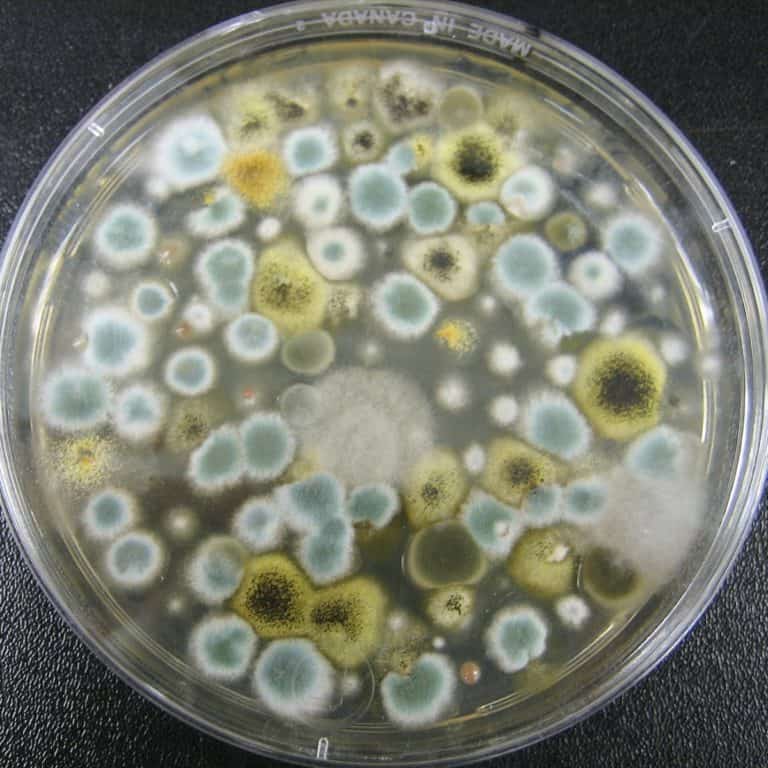
Allergies generally don’t sound much of a problem to most people but those who have asthma can have an intense reaction upon exposure.
Can Mold Cause Severe Health Problems?
A study conducted by the Institute of Medicine in 2004 proved that there is a link between mold exposure to respiratory tract symptoms in healthy people, asthma, and hypersensitivity pneumonitis in people with the immune-mediated condition.
Not only does mold irritate the respiratory system, but there can also be other health risks that include:
- Infection
- Pulmonary Hemorrhage
- Toxic Mold Syndrome
- Headaches and Sore Throat
- Sinus Problems
- Eye Irritation
- Regular, Unexplained Bloody Nose
Now these symptoms above are when mold is at severe levels but, it can also be affected by:
- The conditions of mold growth
- Length and amount of exposure to the mold
- Individual sensitivity to the mold
The people who are at the most risk for health problems related to mold exposure are generally:
- Infants
- Children
- The elderly
- Individuals with weak immunity
- Individuals with allergies
- Individuals with underlying lung disease
- Individuals with chronic respiratory disease
This is why as aquarium owners we need to be aware of the signs of mold because as adults, we are generally not the ones who become affected by any mold outbreak. Keeping an eye out for signs in your family members or work colleagues (depending on where the aquarium is located) will be the best way to spot any potential problems.
How Can Mold Caused By Aquariums Be Prevented?
Some of the best tried and tested methods, not only tried by myself, but also from researching other aquarists wish moisture problems are to:
- Monitor the humidity level with a simple Humidity Meter. I love this one at Marine Depot as it doubles as a digital thermometer for your tank. Mounting this close to your aquarium allows you to quickly and easily keep track of both your aquarium water temp and the room humidity:
- Keep the humidity level in the room, home, or office between 30% to 50%. A portable dehumidifier or an air conditioner can do the job.
We have a portable dehumidifier that sits in the kitchen and we turn on as needed when it gets really cold and our humidity starts to creep up to around 45-50%.
It has worked great for years and it amazes us how much water this thing pulls out of the air!
You can find a nice selection of Dehumidifiers of all sizes with Free Shipping Here at Amazon.com
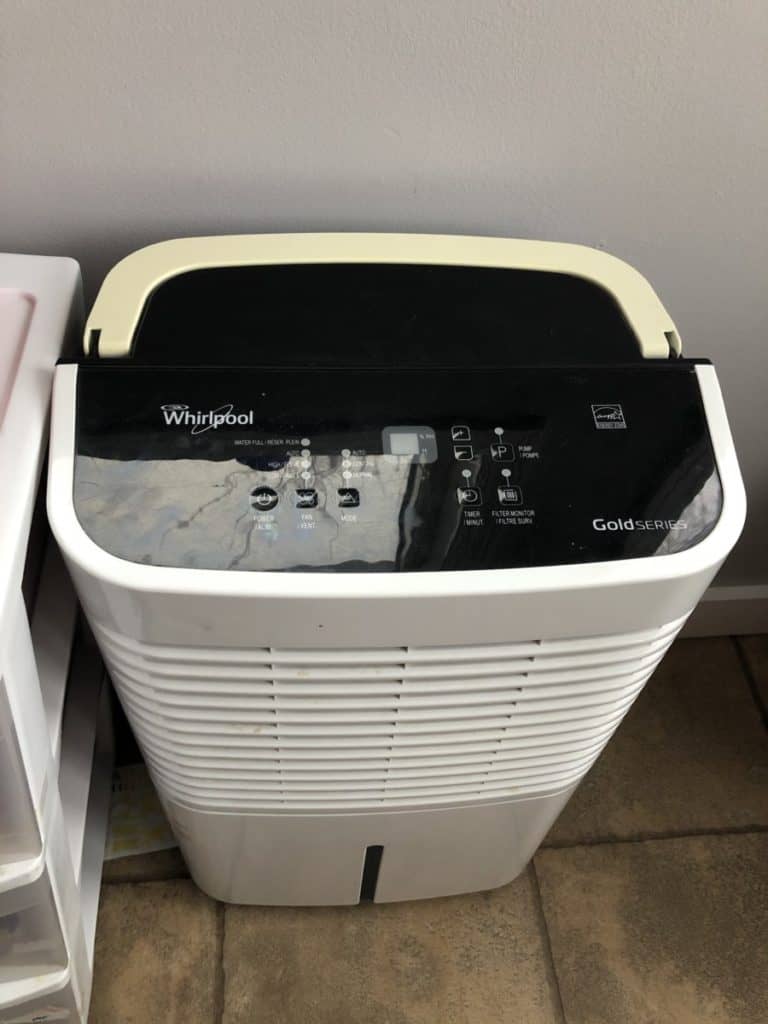
- Fit a HEPA filter to your home HVAC system to help remove mold spores from the air
- Use exhaust fans to ensure proper ventilation, especially in the kitchen, bathroom, and an area where you keep your tank or lots of tanks
- Using covers or canopies on your aquarium, sump, frag tank, QT tank will help minimize evaporation loss – Just be sure to leave some gap for gas exchange from the water
- Experiment with the room temperature. You may find a sweet spot where no moisture forms
- Improve the insulation of the walls if you are planning a reno or moving to a new home and before installing a large aquarium
- Before installing a large aquarium, paint the walls closest to it with bathroom paint containing mold inhibitors
- Use ceiling fans or the HVAC blower to help keep air moving around the home/office during humid periods of the year
- Seal leaky windows and doors with new weather stripping or heat-shrink plastic systems like This One from Amazon.com
Prevention is far better than having mold grow and then having to deal with it, but if you do find areas of mold growing there are several ways you can quickly remove it before it gets too large an area.
How Can Mold Caused By Aquariums Be Removed?
Once mold starts to grow the only way to deal to really prevent it from coming back is to remove things on which it grows or replace that material. This is easy enough if it growing on things that can be replaced, but what about the areas that cannot be replaced:
- Properly clean and dry that area to avoid it from reappearing
- Mold growth from hard surfaces can be removed with soap and water or by using bleach diluted with water (1 part bleach, 2 parts water)
- If you are using bleach then do take precautions:
- Do not mix bleach with ammonia or other cleaning products otherwise, it could produce dangerous toxic fumes
- While cleaning always open windows and doors for fresh air
- Always wear gloves and eyewear
- Seek professional help if cleaning larger areas are required
If proper precautions are not followed, mold removal can be extremely hazardous to your health. Always seek professional advice if you have a large area of mold.
To Finish
Having an aquarium at home is a great hobby. However, you need to understand that it can cause additional humidity which in turn COULD cause mold to grow in your house. Mold can be a very serious problem.
Always keep an eye out for it, keep the aquarium surroundings clean and dry, and be aware of the symptoms to identify any mold-related health issues within your home of work.
Further Reading
If you found this article helpful here are a few more you may like:
- Where To Put An Aquarium – Tips No One Tells You!
- Can Aquariums Be Safely Kept in a Bedroom?
- Aquarium Safe Glues, Adhesives & Silicones – Your Guide
- Aquarium Floods & Leaks: 18 Preventions You Need To Know!
- Candles, Scented Oils & Air Fresheners – Are They Aquarium Safe?
Main Header Image:
Indoor Mold – Alexander Davronov

